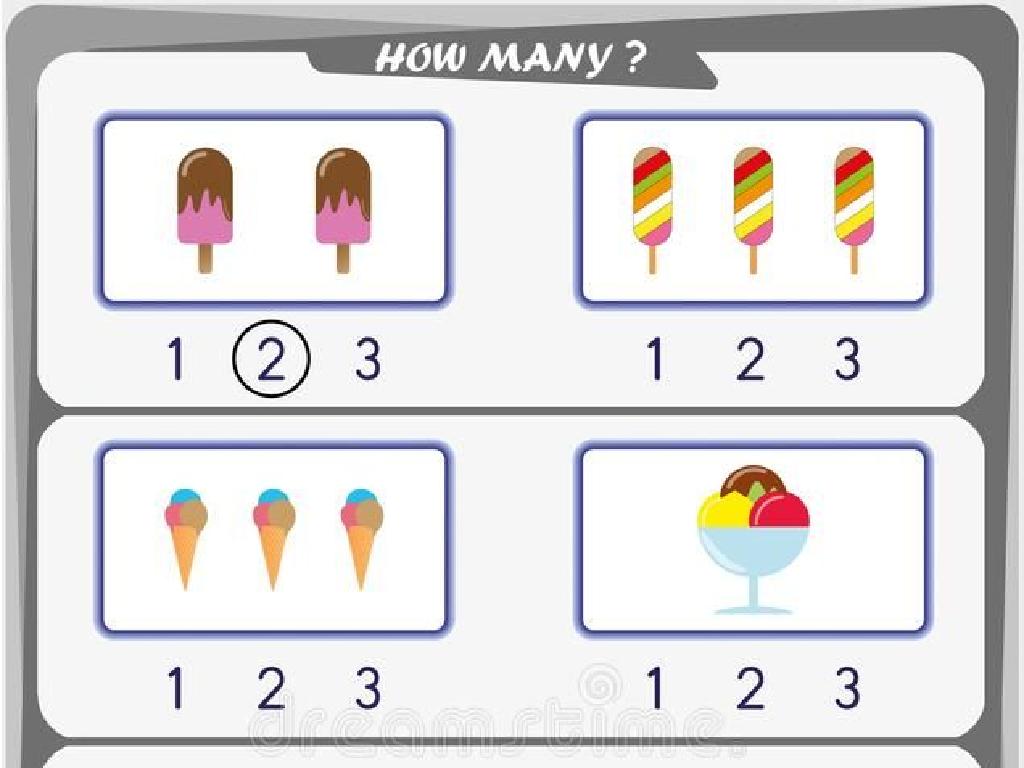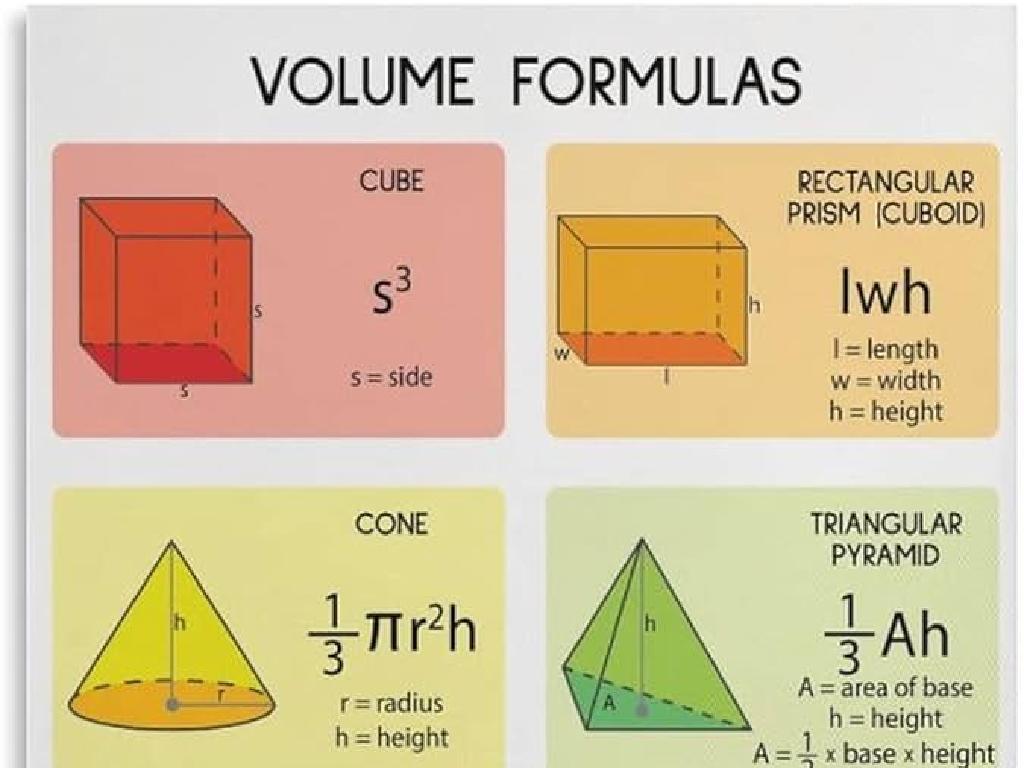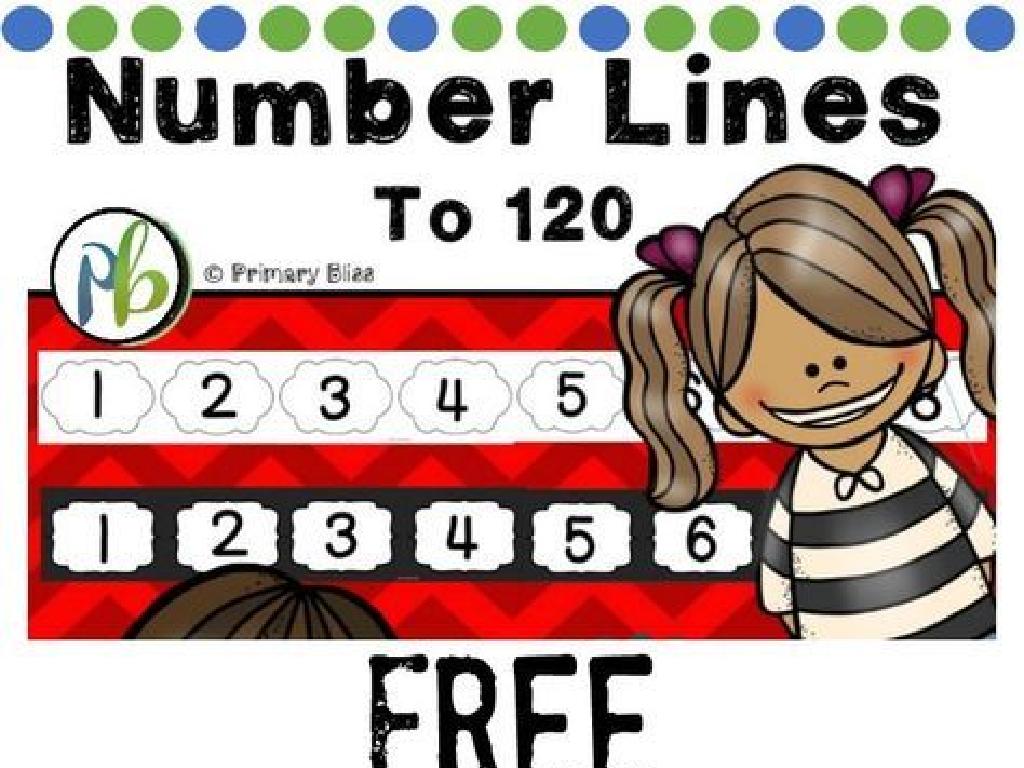Division Patterns With Zeros
Subject: Math
Grade: Sixth grade
Topic: Divide Whole Numbers
Please LOG IN to download the presentation. Access is available to registered users only.
View More Content
Division Patterns with Zeros
– Recap: What is division?
– Division is splitting into equal parts or groups.
– Exploring division patterns
– Patterns emerge when dividing numbers by 10, 100, 1000…
– Significance of zero patterns
– It simplifies complex division problems.
– Applying zero patterns in division
– Helps in quickly solving divisions ending with zeros.
|
Begin with a brief review of the basic concept of division as separating a number into equal parts. Introduce the idea of division patterns, particularly when dividing by multiples of 10. Emphasize the importance of understanding these patterns as they make it easier to work with large numbers and save time. Show how zeros in the divisor or dividend affect the quotient. Provide examples such as dividing by 10, 100, and 1000 to illustrate how the number of zeros in the divisor corresponds to the number of places the decimal point moves in the dividend. Encourage students to practice with different problems to become comfortable with these patterns.
Recognizing Division Patterns with Zeros
– Identify division patterns
– Look for repeated number behaviors
– Understand zeros in division
– Zeros can simplify or complicate division
– Division without zeros examples
– 200 ÷ 2 = 100, notice the pattern?
– Practice pattern recognition
– Use exercises to spot patterns quickly
|
This slide introduces students to the concept of recognizing patterns in division, particularly when zeros are involved. Start by explaining that patterns can help simplify the division process and make it faster to solve problems. Discuss how the presence of zeros can change the outcome of a division problem, either by making it simpler (e.g., 1000 ÷ 10) or more complex when zeros are within the dividend. Provide examples of simple division without zeros to establish a baseline understanding. Encourage students to practice with different problems to become adept at spotting these patterns. This foundational skill will aid them in more complex division tasks and enhance their overall number sense.
Division Patterns with Zeros
– Dividing by 10 simplifies numbers
– Move the decimal one place to the left
– Patterns in dividing by 100 and 1000
– Each zero in the divisor moves the decimal one place left
– Practical examples with large numbers
– Divide 5,000 by 100 or 50,000 by 1,000
– Understanding powers of ten
– Powers of ten have one followed by zeros
|
This slide introduces students to the concept of division by powers of ten and the patterns that emerge when dividing whole numbers by 10, 100, and 1000. Emphasize the simplicity of moving the decimal point to the left by one place for each zero in the divisor. Provide practical examples such as dividing 5,000 by 100 to show how the number becomes smaller and more manageable. Explain that understanding the concept of powers of ten is crucial for recognizing these patterns. Encourage students to practice with different large numbers to become comfortable with the process.
Understanding Zeros in the Dividend
– Zeros impact on division
– Zeros can change the quotient. Let’s explore how!
– Step-by-step examples
– We’ll divide numbers like 4000 ÷ 4 and see what happens.
– Common mistakes to watch
– Don’t drop zeros without dividing or misplace the decimal.
– Practice problems
|
This slide aims to clarify the concept of zeros in the dividend and how they affect the division process. Start by explaining that zeros in the dividend can sometimes be ignored, but only after dividing all non-zero digits. Work through examples, such as 4000 ÷ 4, to show that the zeros remain in the quotient. Highlight common mistakes, such as dropping zeros prematurely or misplacing the decimal point in decimal division. Conclude with practice problems to reinforce the lesson. Encourage students to solve problems on their own and then discuss the solutions as a class.
Zeros in the Quotient
– When zeros appear in the quotient
– Zeros occur when dividing by multiples of 10.
– Step-by-step division examples
– Let’s divide 500 by 5, step by step.
– Tips for quotient prediction
– Notice patterns when dividing by 10, 100, 1000…
– Practice with example problems
– Try 4000 ÷ 20 and see the pattern of zeros.
|
This slide introduces students to the concept of zeros appearing in the quotient during division. It’s important to explain that zeros often appear when dividing numbers by multiples of 10. Provide step-by-step examples to illustrate the process, such as dividing 500 by 5, and show how the zeros in the dividend affect the quotient. Offer tips to help students predict the appearance of zeros in their answers, emphasizing the patterns that emerge when dividing by 10, 100, or 1000. Encourage students to practice with example problems to reinforce the concept and build confidence in identifying when zeros will appear in the quotient.
Class Activity: Division Pattern Discovery
– Group activity to find patterns
– Each group presents their findings
– Discuss pattern recognition
– Why is it important to see patterns?
– Understand division with zeros
– How zeros affect division outcomes
|
This slide introduces a class activity focused on discovering patterns in division, particularly when zeros are involved. Divide the class into small groups and provide them with a set of division problems that include zeros. Encourage them to work together to find and discuss the patterns they observe. After the activity, each group will present their findings to the class, fostering a collaborative learning environment. Conclude with a discussion on the importance of pattern recognition in mathematics, which is crucial for problem-solving and understanding mathematical concepts. Highlight how recognizing patterns can simplify complex problems, especially in division. For example, when dividing by powers of 10, the number of zeros in the divisor indicates how many places the decimal point moves to the left in the dividend.
Division Patterns with Zeros: Practice
– Solve division problems with zeros
– Share and discuss solution methods
– Compare how different students approach the same problem
– Review and address confusions
– Clarify any misunderstandings or errors in calculation
– Reinforce learning through practice
|
This slide is focused on reinforcing the concept of division patterns with zeros through individual practice and collaborative learning. Students will work on problems independently to apply their understanding of the concept. Afterward, they will share their solutions with the class, providing an opportunity to discuss various methods and strategies used to solve the problems. This collaborative review allows students to learn from each other and helps the teacher identify and clarify any areas of confusion. The teacher should prepare several division problems with zeros for students to solve, ensuring a range of difficulties to cater to different skill levels. During the review, encourage students to explain their thought process, which will deepen their understanding and help others who may have struggled with the concept.
Homework and Next Steps
– Complete Division Patterns Worksheet
– Preview Long Division Techniques
– Get a sneak peek at tomorrow’s topic.
– Practice makes perfect!
– Remember, the more you practice, the easier it gets.
– Keep up the great work at home!
|
For homework, students are expected to complete a worksheet that reinforces their understanding of division patterns with zeros. This will help solidify the day’s lesson and prepare them for the upcoming topic of long division techniques. Encourage students to preview the next lesson to get a head start. Emphasize the importance of practice in mastering math skills and motivate them to continue working hard at home. Acknowledge their efforts so far and inspire them to keep improving. Provide a supportive environment where students feel comfortable asking for help if they encounter difficulties with their homework.





